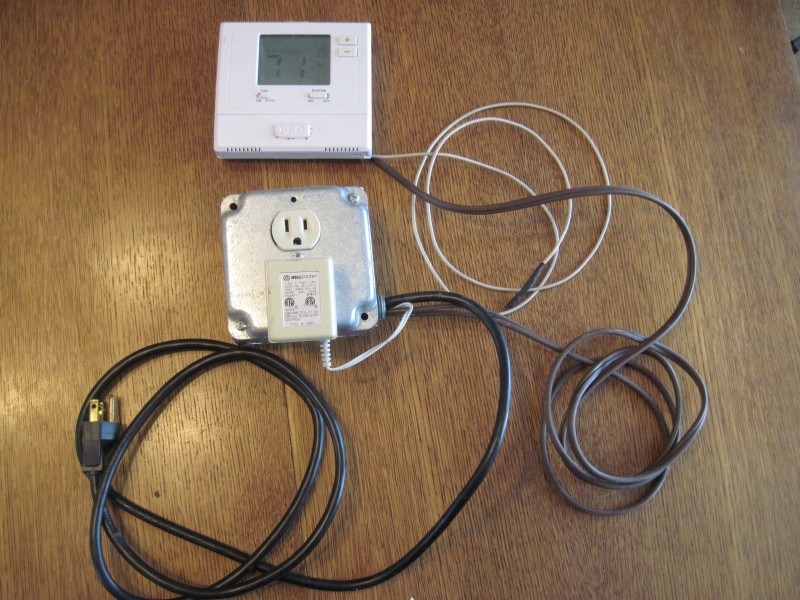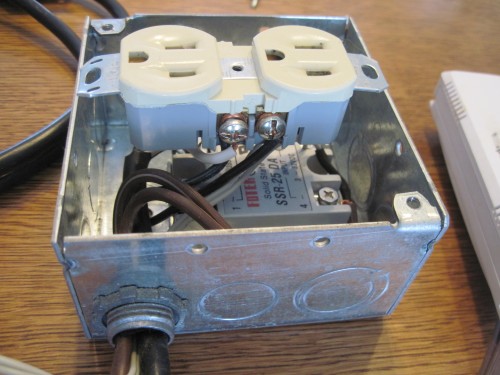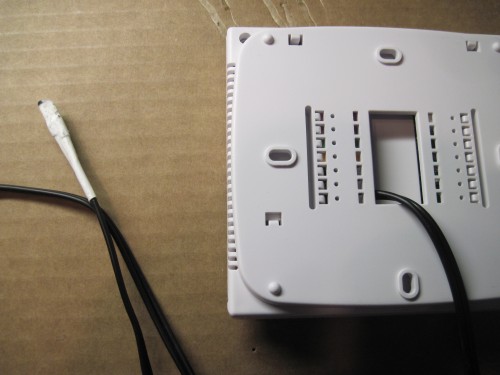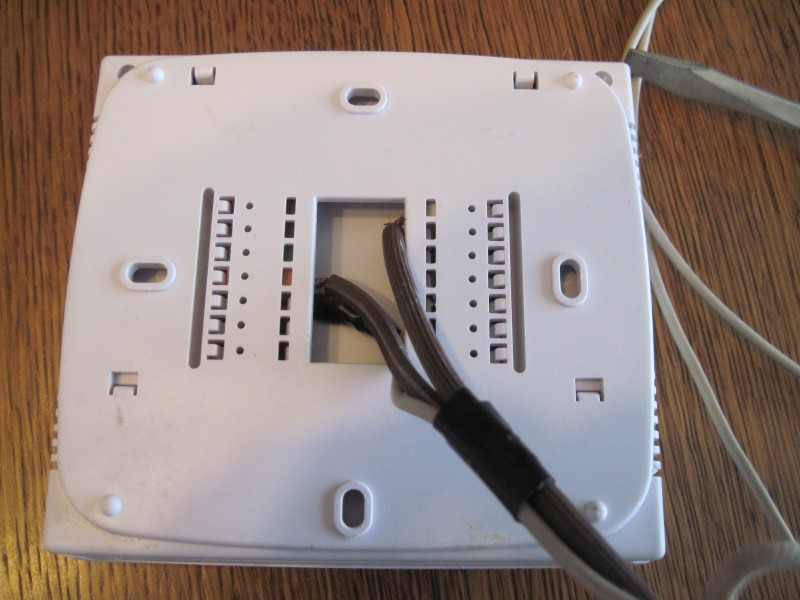This homemade temperature controller is better than some that you can buy. It has a high amperage rating and is quite customizable. Plus, by separating the power relay from the sensitive electronics (a generic home thermostat) things are simplified.
It doesn’t require too much electrical work and it operates any 120V device. Small chest freezers work well and can be used to ferment beer (especially lagers in the 45-55F range). But one could be used to heat or cool about anything.
The idea is pretty straightforward. An electrical extension cord (6 feet or so) plus into the wall power and powers the outlets on the box. One outlet always has power on, which the 12V wall wart is plugged into. This provides a power source for the thermostat-controlled relay input. The thermostat is connected between the 12v wall wart and the solid state relay. The relay turns on 120V power to the top plug when the 12V power input is switched on by the thermostat.
I screwed the relay into the outlet box through a pre-existing hole. I used heavy gauge solid electrical wire to go from the relay to the outlet. It’s not the easiest wire to work with, but for 120V it is needed and once in place it stays there.
What about the thermostat? Does it have to be in the freezer or whatever is controlled? No, though that would work—it just wouldn’t be as clean. Instead, I detached the thermister and spliced in some wire, so the thermostat could be controlled from outside the device to be cooled or heated.
I recommend this thermostat: PRO1 IAQ: T771 Thermostat. It is a heat or cool only thermostat that will cool down to 25F. I bought a couple off ebay for around $35 each. It is simple, but has some nice features, like a backlight.
I took the cover off after removing the screws and found the thermistor (which detects the change in temperature). It’s not hard to find, because it was in the corner, near the air vents. Put your finger on it and watch the temperature rise to make sure you have the right component. I de-soldered it and then added wire to the two leads coming out the back of the thermostat. I recommend about 5 feet of wire—enough to reach into your freezer or the device to be controlled. I used heat shrink tubing to insulate the thermistor leads and over it the whole thing. I left just the head of it slighly exposed, then doused everything with regular super glue to keep moisture out. I originally tried a silicone glue, but it was conductive, so I got strange temperature readings.
The thermostat does have a programmable adjustable swing and a jumper inside to turn off the 5 minute compressor delay. The low set point should be changed from its default of 50F to 25F. It is a simple matter to program. The thermostat is connected in series from the 12V wall wart to the relay input. I used the Y/W and R connectors on the thermostat. Then I secured everything with a nylon tie.

The relay I bought off ebay for about $10. It does the actual switching work. This is a 25 amp model, which I recommend. Large freezers draw a lot of current when starting up. I’ve had smaller relays go bad on old, inefficient freezers. As you can see from the picture, the input and output voltages have quite a range, so it has a number of uses. Unlike the old contact relays, there are no moving parts (hence “solid state”).
I tested it out first on a lamp and manually changed the temperature. The thermostat is battery operated, so no need to worry about getting it power.
I am really pleased with it and it did not take too long to build. Having control over beer fermentation is a significant advantage. Plus, it was fun to do it myself and know how it works.





Would the same basic idea work for a humidity control if the thermostat were switched for a humidistat?
Yes, the idea works. The relay could switch anything, as long as you have a controller. For controlling 2 directions, you would need two relays. Of course, the devil is in the details.